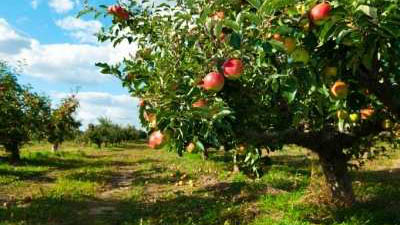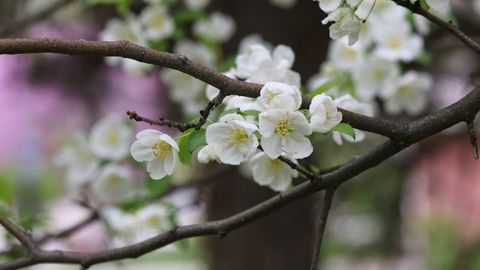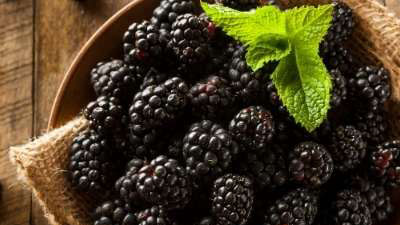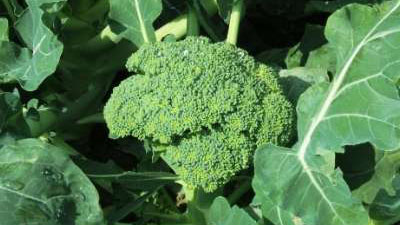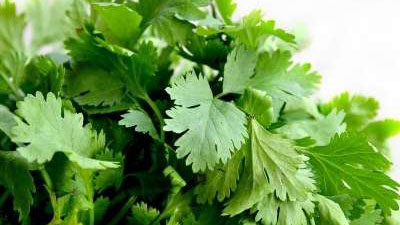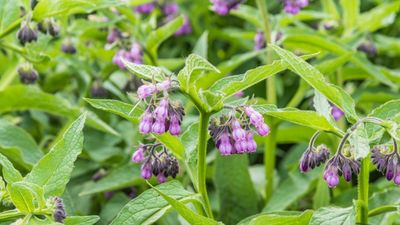Hazelnuts in the Home Orchard
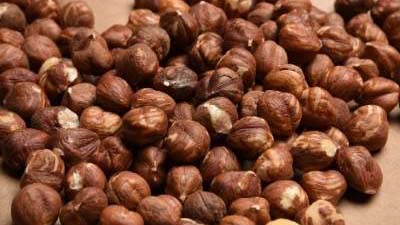
Summary
Hazelnuts or filberts can be useful crops for home food production or hobbyists in Utah. Several species have nuts with good flavor, with American, beaked and certain hybrid types most likely to produce consistently. Though European hazelnut with its large nuts is very common commercially, this species blossoms earlier than others and is more likely to have flowers damaged or destroyed by unseasonably cold weather. All hazelnut species benefit from being planted in frost protected areas to increase the likelihood of consistent nut production.

A Turkish filbert grown in tree form.
In Utah, hazelnuts grown for nut production are usually maintained as shrubs, with an oval or round shape that grows to 15 feet in height and width. Hazelnuts thrive in well-drained, loamy soil but grow in many soil types as long as the soil is well-drained. Nut production is best when cross pollination occurs with another variety of the same species (see Tables 1 and 2) or with other seed grown plants of the same species.
Species and Varieties
Species and variety information is in the following tables. Table 1 features American hazelnut and other relatively cold-tolerant species and are hardy to USDA zones 3 or 4 (equivalent to a mean minimum temperature of -30 to -40° F) depending on the variety and can be grown in most areas of Utah. These hardy species and hybrids still may experience damage to flowers due to extreme temperature fluctuations when they blossom.
Table 1. Common hazelnut species used for nut production, except European hazelnut
| Species | Possible Pollinizers | USDA Cold Hardiness Zone | Other Comments |
|---|---|---|---|
| American hazelnut (Corylus americana) | Other seed grown Amrican hazelnut plants. Purchase 2- 3 plants for sufficient pollination. | 3 | Among the most commonly grown species in northern Utah. Produces well flavored, sweet nuts approximately ½ inch in diameter and length. Sometimes used to create habitat for wildlife and as a hedgerow. Expect plant size to be 15 feet high and 10 feet wide when shrubs reach maturity. |
| ‘Arbor Day’ hybrid hazelnut (C. x ‘Arbor Day’) | Hybrid plants are seed grown and readily pollinize each other. Purchase 2-3 plants for sufficient pollination. | 3 | Cold-hardiness is the main feature of Arbor Day Foundation hybrids, which will grow in USDA hardiness zone 3. Expect plant size to be 15 feet high and 10 feet wide when shrubs reach maturity. They produce nuts ½ to ¾ inch in diameter and length. Other, higher yielding hybrid hazelnuts exist that produce thinner shelled nuts. They are less common in commerce. Contact vendors listed at the end of this publication for further information. |
| Beaked Hazelnut (C. cornuta) | Other seed grown beaked hazelnut plants. Purchase 2- 3 plants for sufficient pollination. | 3 | Less common in the nursery trade but sometimes available. Used in breeding programs and wildlife conservation due to its disease resistance and cold hardiness. Produces nuts ½ to ¾ inch in diameter and length. Expect plant size to be 15 feet high and 10 feet wide when shrubs reach maturity. |
| Large filbert (C. maxima) | Other seed grown large filbert plants. Purchase 2-3 plants for sufficient pollination. | 3 | Very similar to European hazelnut with nut being intermediate in size between American and European hazelnuts. In the United States ‘Purpurea’, a red leafed variety, is the most common form available to home owners. |
| Turkish filbert (C. colurna) | Another seed grown plant of the same species. Purchase 2-3 plants for sufficient pollination. | 4 | Primarily grown as an ornamental tree; nuts are similar in size to American hazelnut, but are harder shelled. |
Table 2 gives specific information for European hazelnut. Keep in mind that even though the species is cold-hardy in much of the state, actual nut production may be limited by late frosts due to how early this species blooms. Varieties are listed for general information but most have not been systematically tried in the Intermountain West, so plant with caution.
Table 2. Common cultivars of European hazelnut (C. avellana)
| Cultivar | Possible Pollinizers | Other Comments |
|---|---|---|
| ‘Barcelona’ | ‘Casina’ | Popular variety that is a heavy producer. It is being used less due to its susceptibility to eastern filbert blight (EFB). |
| ‘Butler’ | ‘Ennis’ | Slow growing but produces very large, rounded nuts. |
| Casina’ | ‘Barcelona’ or ‘White Aveline’ | Newer variety that has thin shelled nuts and is a heavy producer. |
| ‘Ennis’ | ‘Butler’ | Produces large nuts and large overall crops. Along with ‘Barcelona’, one of the most popular varieties. It is very susceptible to EFB. |
| ‘Eta’ | Any other variety | Bred by Oregon State University primarily as a pollinizer for other varieties. Later flowering and produces medium sized nut. EFB immune. Due to later blooming, it may be slightly more likely to consistently produce. |
| ‘Gamma’ | Any other variety | Bred as a pollinizer for other varieties. Very productive with medium to small nuts. EFB resistant. |
| ‘Hall’s Giant’ (‘Bowlyer’) | Any other variety | Produces large nuts and is a good pollinizer for other varieties. Less cold tolerant than other cultivars and produces light crops. |
| ‘Jefferson’ | ‘Eta or Theta’ | This is a new variety that is resistant to EFB. The tree is smaller than ‘Barcelona’ but is more productive with high quality nuts. |
| ‘Purpurea’ | ‘White Aveline’ | This is an ornamental variety with dark red spring leaves. It still produces edible nuts. |
| ‘Red Dragon’ | Any other variety | Bred as an ornamental that features contorted branches similar to the ornamental variety ‘Contorta’, but with dark red leaves. Nuts are produced smaller in size than types bred for nut production. Resistant to EFB. |
| ‘Santiam’ | ‘Gamma or Yamhill’ | Medium to large nut, very productive, and resistant to EFB. |
| ‘Theta’ | ‘Jefferson’ | Late blooming variety that may be slightly more likely to produce nuts. EFB immune. |
| ‘Yamhill’ | ‘Santiam, or Gamma’ | Early ripening, very tasty nut, resistant to EFB. A small tree. |
How to Grow
Soil
Hazelnuts prefer well-drained, moist, loamy soil, but grow in many soil types given proper drainage. An inexpensive soil test can help determine if soil is suitable for hazelnut production. For more information about soil testing, visit the USU analytical laboratory website at: http://www.usual.usu.edu/.
Soil Preparation, Planting and Handling
Dig the planting hole twice as wide as the root system of the tree and deep enough to just meet the root collar. Incorporate organic matter (compost) into the soil at the time of planting and mix into the back-fill soil at a ratio of 1 part organic matter to 3 parts soil. For more information concerning planting trees read the following fact sheet: http://extension.usu.edu/forestry/Reading/Assets/PDFDo cs/NR_FF/NRFF017.pdf
Hazelnuts may be available in bare-root or containerized forms. When purchased bare-root, the roots should be free of major damage and not dried out. Install newly purchased plants as quickly as possible. When bare-root plants must be stored, keep them at a temperature above freezing and below 40° F. Keep rootsystems covered with moist sawdust, peat-moss, or wet straw or potting soil until the time of planting.
Trees and shrubs should not be planted in turf due to differing irrigation and nutrient requirements. Turf competes for soil nutrients and causes up to a 50% reduction in the growth rate of some trees. If trees must be planted in turf situations, remove sod at least 2 to 3 feet away from the trunk and replace with mulch.
Spacing
Hazelnuts should be spaced 15 to 20 feet apart in orchard situations. If planted in the landscape, leave enough room so that plants are not crowded to allow for sufficient nut production.
Pruning
Left in a shrub form, hazelnuts need little maintenance. Renewal pruning (a method of pruning where a certain percentage of old growth is removed from near the base of the plant annually to encourage new growth) is a good strategy for maintaining shrub size and maximizing production. For hazelnuts, remove between 15 and 20% of old growth a year. Limbs can also be removed from near the ground to make nut collection easier.
If a tree form is desired (this is only practical using European and Turkish species), train young plants to develop three to five strong scaffold branches. Mature trees need moderate pruning annually to stimulate stem growth, to maintain high production of large nuts, and to minimize alternate bearing, where trees put on heavy nut crops in one year and light or non-existent crops the next. Pruning out suckers from around the base of the tree will also help to maintain the tree form. For more information on pruning, read the fact sheet Pruning the Home Orchard at: http://extension.usu.edu/files/publications/publication/H G_363.pdf.
Water
Newly installed plants require supplemental irrigation for at least 2 years. This involves deep watering periodically while allowing the soil in and around the plant’s root-zone to dry moderately between irrigations. Daily and frequent, shallow watering is discouraged.
Soil type greatly influences moisture availability. Soils high in clay retain water for a longer period of time than sandy soils. Cool weather also reduces the need for frequent irrigation while hotter temperatures generally increase water needs. Hazelnuts should not be planted in turf where lawns and woody plants have differing irrigation requirements and compete for nutrients.
After 2 to 3 years, hazelnuts require less frequent supplemental irrigation. In clay or loamy type soils, irrigate established plants one to times a month, 2 feet deep during the hottest time of the year. This frequency may need to be increased to two to three time monthly in sandy or other sharply drained soils.
Fertilization
A soil test reveals soil nutrient levels and composition, which greatly assists in determining if fertilization is warranted. Additionally, hazelnuts should only be fertilized in the spring as trees begin actively growing. Another help in determining if they may need fertilizer is their overall appearance. If the plant appears healthy and yields sufficiently, no fertilizer is needed.
Mulch
Woody plants benefit from 2-3 inches of mulch placed over their root-zones. This increases plant growth rates, and reduces competition with weeds and the amount of supplemental irrigation needed. However, do not allow mulch to directly contact the trunk(s) at the base of the plant to reduce potential rodent damage.
Avoiding Problems
Weeds
Controlling weeds in the planting area before planting and for the life of the tree is imperative. Hand weeding or shallow mechanical cultivation is usually sufficient. If hard-to-kill perennial weeds such as field bindweed are present, certain herbicides may be suitable for control. Keeping the area underneath weed free will make harvest from the ground much easier and eliminate competition for nutrients and soil moisture. Apply mulch 2 to 3 inches deep around the root-zone of plants to reduce weeds. This reduces time spent pulling weeds and the need for herbicide applications. When weeds do grow through mulch, spot treatment with an herbicide is acceptable. Do not apply mulch so that it comes in direct contact with plant trunks, and do not apply herbicides so that they come into direct contact with trunks and branches. Contact your local USU Extension office for current information on methods of controlling various weeds. Keep in mind that information given on pesticide labels is federal law and should be followed exactly.
Pests
Hazelnuts are somewhat susceptible to a number of pests including aphids, leaf rollers, leaf and nut feeding insects, spider mites and scales If a potential pest is found, agriculture or horticulture agents at your local USU Extension office can assist in identification and control. The USU Plant Pest Diagnosis Lab is also an excellent resource and information can be found at http://utahpests.usu.edu/.
Diseases
Hazelnuts are susceptible to a number of diseases, but many of these are less common or not present in the Intermountain West. Diseases of most concern in Utah are various root rots and powdery mildew. Both can usually be managed employing good cultural practices such as planting in compatible soil, correct irrigation and ensuring that plants have sufficient air circulation. See Table 3 for specific information pertaining to disease management.
Diseases of Hazelnuts
| Eastern Filbert Blight | Turkish, American and beaked filbert appear immune, but it is of serious concern anywhere European hazelnuts are grown. Filbert blight fungal spores are released during prolonged wet weather and enter new growth. Once the infection has entered, it can only be removed by pruning 1 to 3 feet past where symptoms are observed. The use of resistant or immune cultivars is the best way to prevent the disease. Otherwise, fungicide sprays applied as protectants to new growth in spring is important for susceptible cultivars. To date, this disease has not been reported in Utah. |
|---|---|
| Phytophthora and other root-rot diseases | Phytopthora is a fungal-like organism that can usually be prevented through good soil and water management practices. Over-watering greatly increases chances plants contract the disease. |
| Powdery Mildew | If plants are infected with powdery mildew in the autumn, treatment often is not needed. For more persistent cases, fungicidal treatments are available. |
Harvest and Storage
Depending on the species or cultivar, hazelnuts ripen from late September through October. Nuts grow inside of a husk and usually drop to the ground upon ripening. As nuts drop, they should be collected from the ground several times a week. This drop may not occur with seed grown plants, in which case nuts should be handpicked after the surrounding husks have browned. It is far less common, but some seed grown plants may produce nuts that are difficult to remove from the husk. If this occurs, the kernels can still be removed by cracking.
Dry hazelnuts soon after harvest at temperatures between 95° and 105° F. If nuts are dried at temperatures above 110°, flavor may be negatively impacted. Nuts should be dried for 72 to 96 hours.
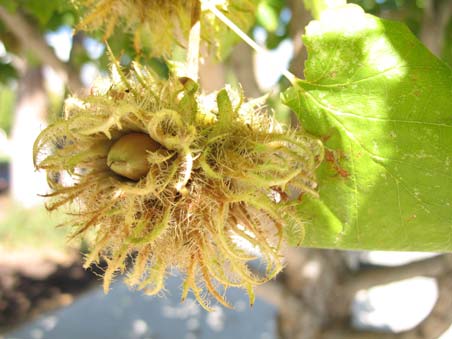
Hazelnuts form in a husk. Nuts usually fall when ripe
but may need to be hand harvested.
Productivity
The amount of nuts produced per plant (especially seed grown plants) can vary widely. Preliminary research from Minnesota shows that when using hybrid varieties selected for nut production that between 4 and 12 pounds can be produced per plant annually, with an average near 7 pounds.
Hazelnuts often bear more heavily in some years than others. However, lower yielding plants generally produce larger nuts. Additionally, production from seed grown plants may be less than these given estimates due to genetic variability.
Nutrition
Hazelnuts are very nutritious. They are a good source of dietary fiber, iron, calcium and potassium. Additionally they are rich in several vitamins including B1, B2, B6 and E. Hazelnuts also contain monounsaturated fats which are a good source of high density lipoproteins that reduce blood cholesterol and prevent atherosclerosis. The FDA recommends that the average person consume 1.5 ounces of nuts per day. This equates to around 1/3 cup or 18 to 20 average size hazelnuts.
Frequently Asked Questions
Where do I purchase plants for my yard or landscape? Hazelnuts are somewhat available from local garden centers and nurseries. Another option is to purchase online or via mailorder catalog. Some businesses that sell hybrid plants bred for increased nut production and quality include:
Badgersett Research Farm RR 1, Box 141 Canton, MN 55922 (507) 743-8570 www.badgersett.co
Grimo Nut Nursery 979 Lakeshore Rd. Niagara-On-The-Lake Ontario, Canada L0S 1J0 (905) 934-6887 nuttrees@grimonut.com www.grimonut.co
Grinnell Nursery 14495 Morice Rd. Perry, MI 48872 (517) 625-7176
How many years are required for plants to begin producing nuts? Based on research from Minnesota, hazelnuts begin producing within 3 to 4 years and come into full production after 7 to 8 years.
References
- Hollingsworth, C. 2008. 2008 Pacific Northwest insect management handbook. Oregon State University Press. Corvallis, OR.
- Josiah, S. 2000. Commercial hazelnuts in Minnesota. Fact sheet (FO-07280-GO). University of Minnesota Extension. Minneapolis, MN.
- Pschiedt, J., and C. Ocamb. 2008. 2008 Pacific Northwest disease management handbook. Oregon State University Press. Corvallis, OR.
- Olcott-Reid, B., and W. Reid. 2007. Fruit and nut production. Stipes Publishing. Champaign, IL.
- Snare, L. 2008. Hazelnut production. Fact Sheet (Primefact 765). New South Wales Department of Primary Industries. Sydney, NSW, Australia.
- Stebbins, R., and J. Olsen. 2007. Growing tree fruits and nuts in the orchard. Bulletin (EC819). Oregon State University Press. Corvallis, OR.
Utah State University Extension
Peer-reviewed fact sheet
Download PDF
Authors
Taun Beddes, Steve Renquist, Michael Kuhns, and Michael Pace
Related Research





